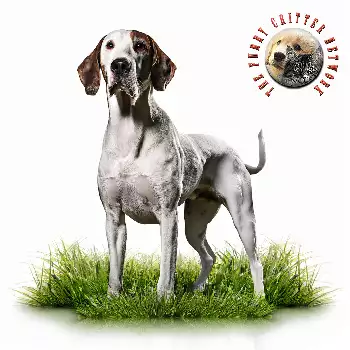The Drentsche Patrijshond has been specifically developed over centuries to excel as both a working partner and a cherished family member, making them uniquely suited to integrating into family life while maintaining their working heritage. Their ability to form strong emotional bonds with all family members while respecting individual relationships and hierarchies makes them exceptional family dogs for the right households.
Within the family structure, the Drentsche Patrijshond typically develops a primary bond with one family member while maintaining warm relationships with everyone in the household. This primary bond often forms naturally based on who provides the most training, exercise, and daily care, though it can be influenced by the dog's personality and the family dynamics. Despite this special relationship, well-socialized Drents readily accept direction and show affection to all family members.
The breed's interaction with children is particularly noteworthy, as they seem to possess an innate understanding of how to behave appropriately around young people. Drentsche Patrijshond naturally moderate their energy levels when playing with children and often display remarkable patience with typical child behaviors like loud noises, sudden movements, and enthusiastic handling. Many owners report that their Drents actively seek out children's company and appear to enjoy participating in childhood games and activities.
For families with multiple children of different ages, the Drentsche Patrijshond adapts their behavior to suit each child's developmental stage and personality. They may be gentle and calm with toddlers while engaging in more active play with older children. This adaptability extends to understanding which children may need more protection or guidance, often positioning themselves as natural guardians for the more vulnerable family members.
The breed's exercise and activity requirements significantly impact family dynamics, as they need families who can commit to substantial daily physical and mental stimulation. Families considering a Drentsche Patrijshond should be prepared for daily walks, weekend adventures, and ongoing training activities. However, this requirement can actually strengthen family bonds, as many activities can involve multiple family members and create shared experiences that benefit both the dog and the family.
Training and discipline within the family context work best when approached consistently by all family members. The Drentsche Patrijshond responds well to clear, consistent rules that are enforced by everyone in the household. This breed is intelligent enough to recognize inconsistencies in training approaches and may test boundaries if they perceive weak links in the family's leadership structure.
The space requirements for a Drentsche Patrijshond can influence family living arrangements, as they are generally not well-suited to small apartments or homes without access to secure outdoor areas. While they can adapt to various living situations with adequate exercise, they thrive in homes with fenced yards where they can safely explore and play. Families living in urban environments need to be particularly committed to providing alternative outlets for the breed's energy and curiosity.
The Drentsche Patrijshond's natural protectiveness enhances family security without creating problems with excessive aggression or territorial behavior. They are naturally alert to unusual activities around the home and will announce visitors or potential concerns, but they are also socially intelligent enough to distinguish between real threats and normal daily activities. This balanced approach to protection makes them excellent family guardians without the management challenges associated with overly aggressive breeds.
For families interested in dog sports or outdoor activities, the Drentsche Patrijshond can become a central participant in family recreational time. Their versatility makes them suitable companions for hiking, camping, hunting, agility training, and various other activities that can involve multiple family members. This shared activity participation often strengthens the human-animal bond and provides positive outlets for the breed's high energy levels.
The long-term commitment required for a Drentsche Patrijshond should be carefully considered by families, as these dogs typically live 11-14 years and maintain high activity levels well into their senior years. Families should be prepared for the ongoing responsibilities of training, exercise, grooming, and healthcare throughout the dog's lifetime, ensuring that all family members understand and accept these commitments before bringing a Drent into their home.

